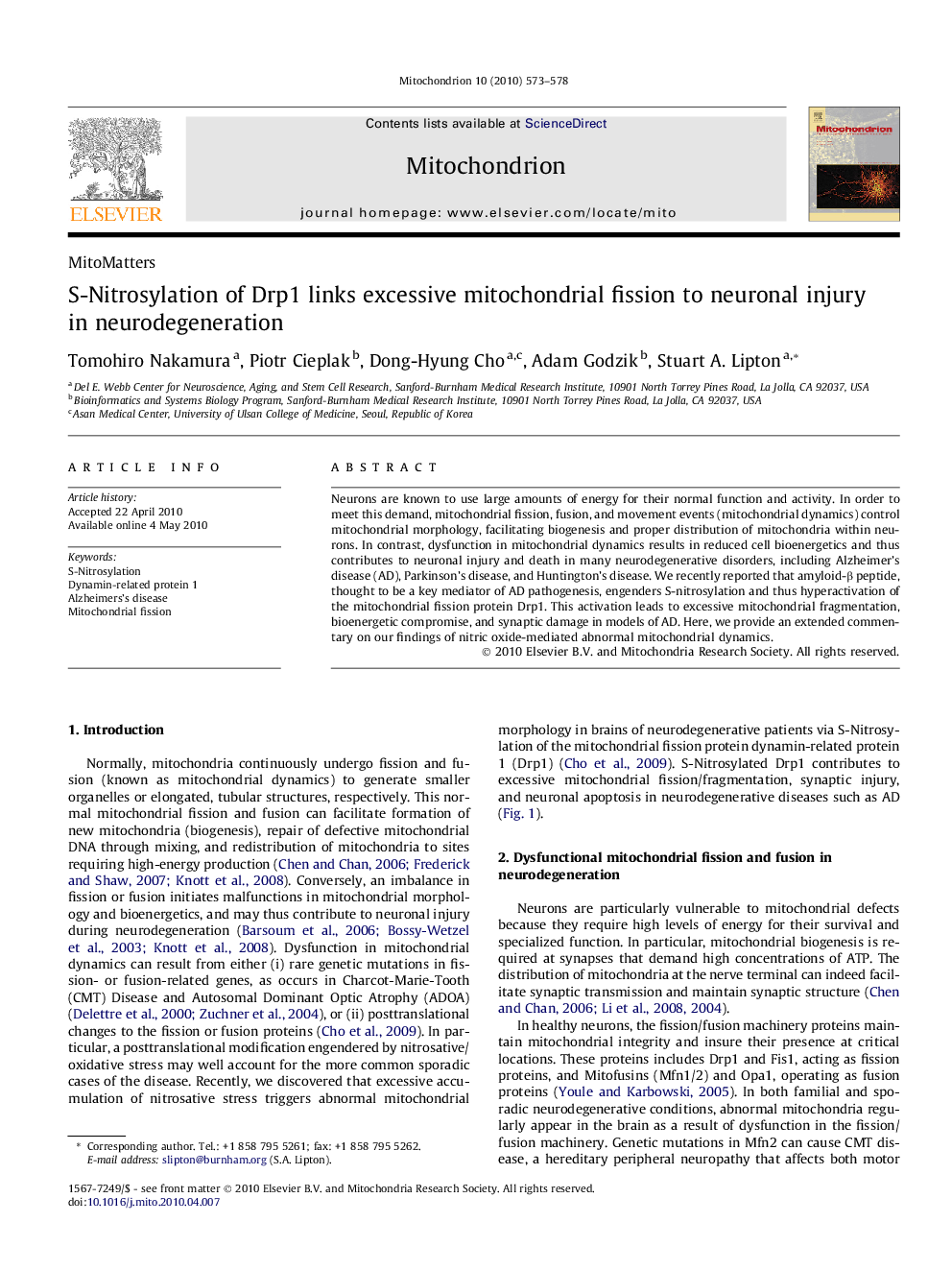| Article ID | Journal | Published Year | Pages | File Type |
|---|---|---|---|---|
| 2068911 | Mitochondrion | 2010 | 6 Pages |
Neurons are known to use large amounts of energy for their normal function and activity. In order to meet this demand, mitochondrial fission, fusion, and movement events (mitochondrial dynamics) control mitochondrial morphology, facilitating biogenesis and proper distribution of mitochondria within neurons. In contrast, dysfunction in mitochondrial dynamics results in reduced cell bioenergetics and thus contributes to neuronal injury and death in many neurodegenerative disorders, including Alzheimer’s disease (AD), Parkinson’s disease, and Huntington’s disease. We recently reported that amyloid-β peptide, thought to be a key mediator of AD pathogenesis, engenders S-nitrosylation and thus hyperactivation of the mitochondrial fission protein Drp1. This activation leads to excessive mitochondrial fragmentation, bioenergetic compromise, and synaptic damage in models of AD. Here, we provide an extended commentary on our findings of nitric oxide-mediated abnormal mitochondrial dynamics.
